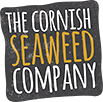Sea Spaghetti
(Himanthalia elongata)
Sea spaghetti (also called thongweed or buttonweed) is another of the large brown seaweeds, although it is not closely related to the kelps or the wracks. It grows explosively up to 3 m long and can form dense mats near the shore which can cover large areas. The young shoots are very good to eat raw and taste a bit like asparagus.
They grow from small button like structures, from which a single front develops which branches in two, which branches in two, which branches in two…you know what happens!
Sea spaghetti can be only found in the East of the Atlantic, from Portugal to Norway, but it is most common around the British Isles.
Nutritional benefits
Sea spag is high in Calcium, Iodine and Magnesium.
Health Benefits
Even though sea spaghetti contains less minerals and vitamins than most other seaweeds, it is rich in polysaccharides such as laminaran. These substances are known to assist the immune system and have anti-cancer properties. Sea spaghetti is also known to have anti-microbial and anti-oxidative properties.

